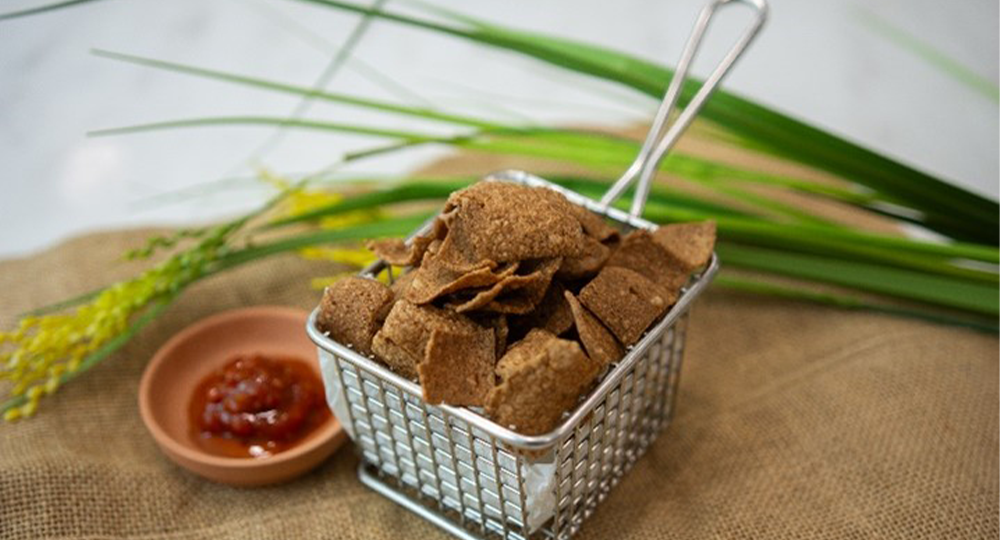Cricket-Based Asian-Style Crackers

KEY INFORMATION
Sustainability - Circular Economy
TECHNOLOGY OVERVIEW
The world faces a mounting challenge in feeding a growing population projected to reach 9.7 billion by 2050 (United Nations). This increase drives demand for high-quality protein, but traditional sources like livestock, poultry, and fish are resource-intensive (e.g., water, land, feed), environmentally harmful (GHG emissions, deforestation) and increasingly unsustainable. With high efficiency, low emissions, and strong nutritional value, insect protein offers a sustainable alternative to conventional meat sources—especially relevant in urbanized, climate-conscious societies seeking innovation in food systems like Singapore.
Crickets possess subtle flavours reminiscent of crustaceans, making them an excellent addition to our fried crackers. This familiar taste profile is particularly advantageous in Southeast Asia, where prawn crackers (Keropok) are a beloved snack. By leveraging this familiarity, this technology hopes to achieve greater consumer acceptance and rapid market adoption.
These versatile crackers can be savoured as a delightful snack or paired with traditional dishes such as Nasi Lemak. Whether enjoyed as a standalone treat or as an accompaniment to a meal, these cricket-infused fried crackers offer a unique and flavourful experience that bridges the gap between innovative food trends and cultural culinary traditions.
TECHNOLOGY FEATURES & SPECIFICATIONS
The method of processing leverages the equipment available and suitable for all standard commercial kitchens e.g. steams, dehydrators, mixers and fryers, thus allowing for lower set-up costs and being scalable to large production quantities. In addition, the recipe does not use any specialised ingredients such as modified starches, additives, preservatives. Starches used are mostly native which means the cost generally be lower and easier to source for. This makes for a relatively clean-label product.
The production steps are shown below:
- Mixing of ingredients
- Precooking and drying of mixture
- The dried pieces are deep-fried in hot oil until crispy and golden brown
This product is intended to be a high protein snack, with protein content estimated to be around 12%. It also does not contain trans fats. Sodium content can be adjusted with formulation. This makes it a healthier alternative to conventional snacks like potato chips. The shelf life of this product is estimated to be at least 6 months in proper packaging under ambient and higher if nitrogen flushed.
POTENTIAL APPLICATIONS
This Cricket Keropok serves as a versatile base snack that can be customized with various ingredients, seasonings, and flavours to cater to different taste preferences and market demands.
- Flavour Variations with Seasonings & Spices (e.g. Mala / Seaweed)
- Dipping & Pairing Options (e.g. Served as a dipping snack with sauces like sambal, garlic aioli, or yoghurt-based dips)
- Functional & Health-Oriented Applications (e.g. High-Protein Snack – Marketed as a nutritious, protein-rich alternative to regular crackers)
- Innovative Culinary Uses (e.g. Crushed as a topping for salads or soups)
Unique Value Proposition
- Scalable with common kitchen equipment
- Clean label and free of additives
- Healthier choice snack
- Sustainable & eco-friendly protein source
- Customisable & versatile to cater to diverse consumer preferences
